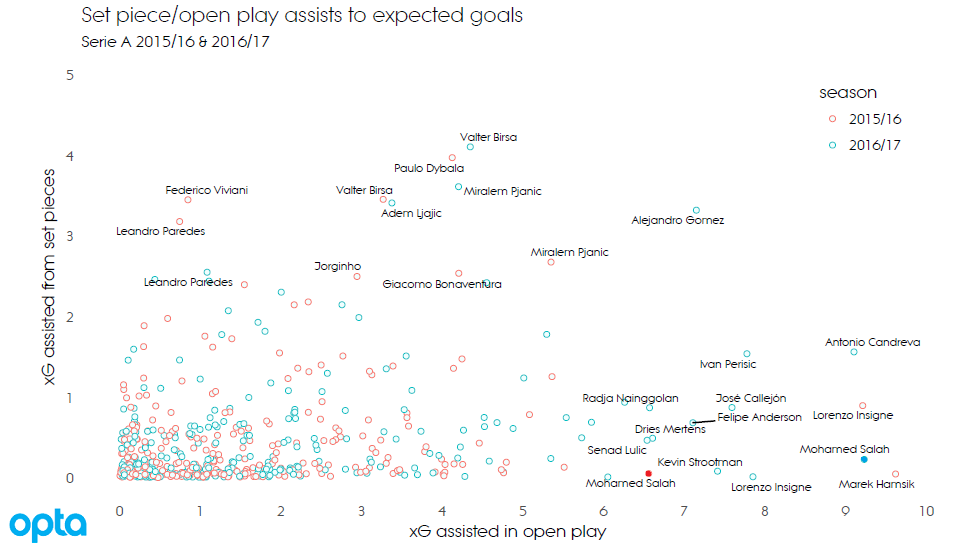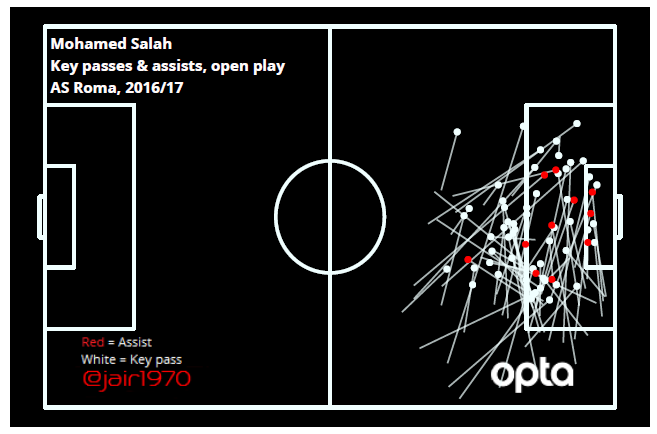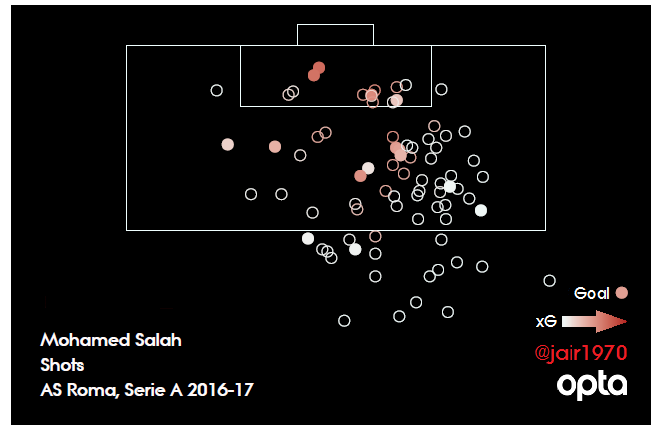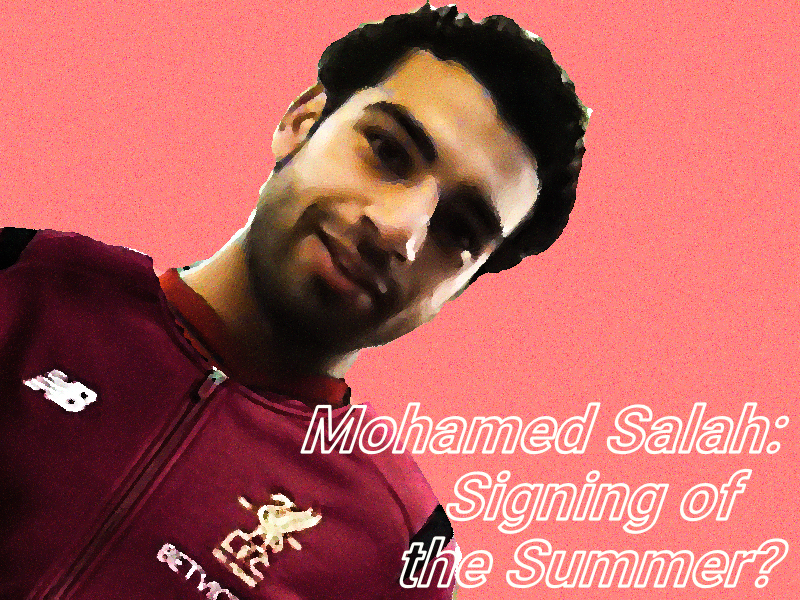It looks like Liverpool are going to make a high end acquisition for their forward line as they close in on the signing of Mohamed Salah. However a little scepticism lies around the deal with Salah having appeared to fail when appearing in the Premier League before at Chelsea and possibly a prejudice against Serie A form translating into the Premier League.
His fee will not be cheap, but when factored against other fees paid this summer, £35 to 40m does not look excessive and his signing will solve a simple problem for Liverpool. With a first choice front three of Philippe Coutinho, Roberto Firmino and Sadio Mané, alternatives have required a different style with Divock Origi and Daniel Sturridge more traditional strikers. Strength in depth is high on Liverpool's priority list and they simply haven’t got a plug and play replacement for their first choice forward three. Salah will offer exactly that with an ability to both score and create.
Performance
In terms of performance, Salah has had two phenomenally successful seasons in Serie A for AS Roma after a promising loan spell in the back half of 2014-15 for Fiorentina. Across that period he has scored 35 league goals and contributed twenty assists. The goals have come at a rate of around one every two games and the assists at a rate of one every three. This is a top class return for a wide forward and scarcely replicated across the top leagues. His expected rate slightly lags (~0.65 expected goals and assists per game, compared to a reality of ~0.8) but is still top class and goals have come from all over, with five from outside the box too. He’s not quite the dribbler his reputation suggests, at least in his time at Roma, and in this he differs to Liverpool’s first choice front three, but potentially that may change in Klopp’s system.
His open play expected assist rate, based on the value of the chances he created as measured by expected goals, lead Serie A in 2016-17 building on a strong 2015-16 total:

We can see that in 2016-17, he was well capable of creating chances in dangerous areas:

And he managed to find pretty good locations for his own shots too, albeit with a bias to the side he operates on:

You want a creative goalscorer entering his prime years? Salah ticks all the boxes.
I ran a few checks to look for what he does in comparison to his peers and came up with a short list of players across the last two seasons in Serie A and the Premier League:
- Alexis Sánchez 2015/16
- Alexis Sánchez 2016/17
- Philippe Coutinho 2015/16
- Philippe Coutinho 2016/17
- Lorenzo Insigne 2015/16
- Lorenzo Insigne 2016/17
These er… “deep statistical checks” represent players of Salah’s ilk who have hit and exceeded the same simple benchmarks he has. If you look “up” from Salah, you get these guys. This is good company he's keeping and the combination of creativity and goalscoring ability is again uncommon.
Concerns?
No transfer is a cast-iron certain hit. However, recently Liverpool have done well in identifying types to fit into their attacking corps. Sadio Mané and Roberto Firmino have both proven to be excellent signings and could be forecast to be so ahead of time. We know that Michael Edwards and his team are analytically minded, and both these players were easy to rate highly statistically--like Salah--prior to joining Liverpool.
So what complaints might we have?
“He’s only performed in Italy”
This might seem appealing, but sidesteps the successes in Liverpool’s recruitment. Sadio Mané arrived fresh from a 6th place finish for Southampton, Roberto Firmino came after Hoffenheim had finished eighth in the Bundesliga, Luis Suárez arrived from the Eredvisie and Coutinho was spotted as a kid who was struggling to get gametime at Inter Milan. That Salah has been performing at a high level for the second placed team in Italy is a higher starting point than all these players, which kind of negates the entire argument.
“He failed at Chelsea”
Eh, back in those days, who didn’t? He landed at Chelsea in the January transfer window of Jose Mourinho’s first season back. 2013-14, got around 500 minutes of play, then all but vanished the following year before going on loan to Fiorentina. Chelsea had Eden Hazard and Willian in those seasons, and Mourinho often preferred to play a worker such as Ramires on the opposite flank to his main creative in Hazard while Oscar, though also young was part of that first team unit. Salah’s dynamic attacking style was only ever likely to appear fleetingly at that juncture, and it was unrealistic to expect him to dislodge those senior pros. Kevin De Bruyne and Juan Mata left in the days before his arrival, so it’s not as if routes to the first team were straightforward at all.
The arrival of Cesc Fàbregas in time for the 2014-15 season worked against Salah for two reasons, insofar as Fàbregas now inhabited a position that Salah’s rivals for a starting spot could have occupied. On top of that, the Spaniard’s inclusion meant that once more Mourinho was potentially less likely to empower a pure attacker on the right side of his 4-2-3-1.
Are there any other obvious problems? The African Cup of Nations for one. It won’t come into play til 2019 but now both Liverpool’s prime right sided attackers will be vanishing for weeks on end. And that highlights a secondary issue: really, Salah’s preferred position on the right side is the same role that Mané inhabited all through 2016-17. Each is versatile enough to move into the centre as well, but it might take some tinkering to get right. A plus point is that the purchase of Salah does also offer the tantalising prospect of dropping Coutinho into midfield and running a front three of Firmino, Salah and Mané. The club is spending £35-40m on a player here, and you’d presume that although he will enable rotation of the front three, it would be desirable to get them all on the pitch at times too.
One possible aspect of his play that might not be best served by Liverpool’s striker free model, insofar as he linked up exceptionally well with a resurgent Edin Džeko, particularly last term. Salah created 22 chances for Džeko in 2016-17 of which seven became assists--only Ousmane Dembélé to Pierre-Emerick Aubameyang was more lucrative with ten. However, in 2015-16 Miralem Pjanić to Salah was Roma’s most regular chance creation combination, to show he is capable on either end of the creative process. A strength in intelligence and timing is supported by the fact he made 17 shots from logged through-balls and scored six times across two seasons.
Concerns abated
Salah will arrive at Liverpool with an expectation to be a big part of the first team rotation. This transfer and the stage of his career is very different to his previous visit to England. There are sufficient positive aspects to feel that concerns about this transfer can be generally disregarded.
Liverpool are acquiring prime talent who at 25 years old is likely to spend his best years with them. Salah’s profile appears so solid at this point that nearly any club in Europe could realistically enhance their squad by acquiring him. There is talk that Roma need to sell to balance their financial considerations, and if that’s the case, then Liverpool have stolen a march by stepping in and getting the deal done. I thought Mané was about the most surefire signing of the 2016 summer window and I feel similarly now about Salah. Does this mean he’s a guaranteed hit? No, but once more Liverpool are showing that their process of identifying attacking talent and acquiring it is generally sound. The chance that he succeeds clearly outweighs the risk that he will fail.
__________________
Thanks for reading.
While writing this, I came across this piece by Ray Hamill @finermargins. Well worth taking a look, and had I not already half written my piece, I could've just tapped the retweet button and saved myself a job 🙂 Anyway, check it out.
